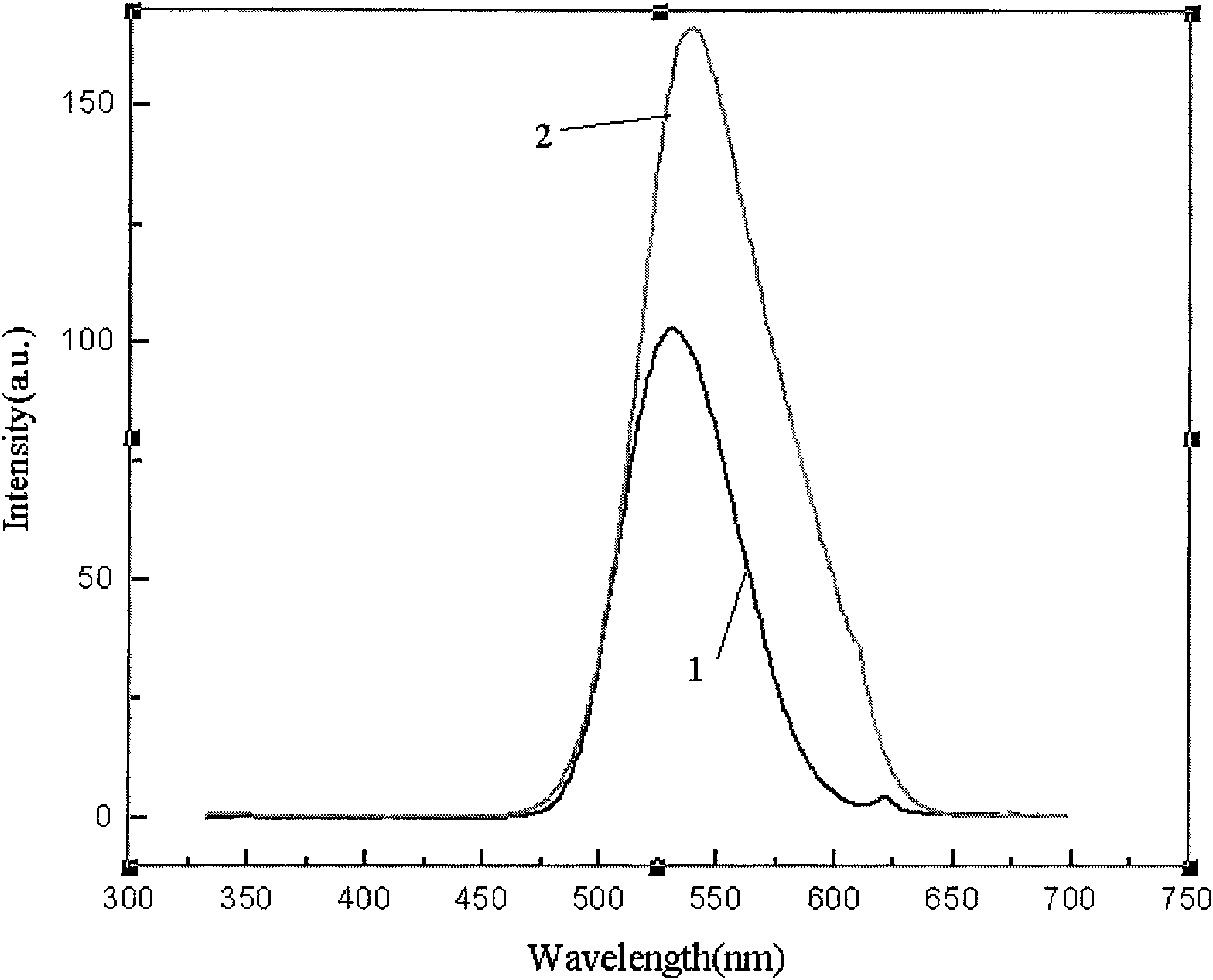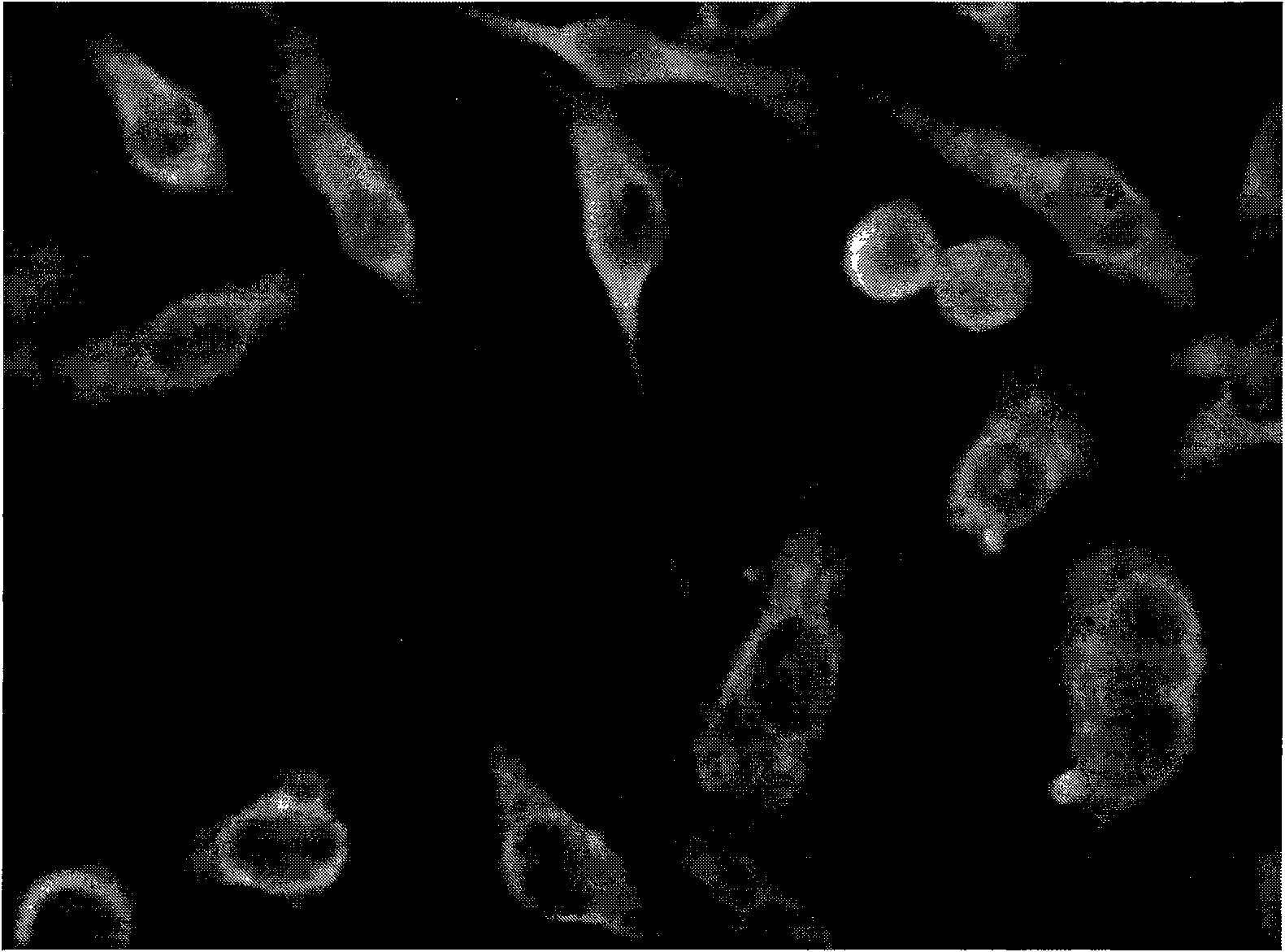Method for producing CdTe-tamoxifen fluorescent probe
A tamoxifen and probe technology, applied in the field of fluorescent probe preparation, to achieve the effects of easy control of composition, low cost, and good fluorescence characteristics
- Summary
- Abstract
- Description
- Claims
- Application Information
AI Technical Summary
Problems solved by technology
Method used
Image
Examples
Synthetic example 1
[0018] Dissolve 0.0018g of tamoxifen in 10mL of secondary water, add 10mL of NaHTe to reduce CdCl 2 The pH of the CdTe solution prepared and purified by isopropanol was adjusted to be neutral. Under the protection of nitrogen, the reaction system was heated to 40° C., condensed and refluxed for 60 min to obtain the CdTe-CdTe-tamoxifen fluorescent probe.
Synthetic example 2
[0020] Take 0.0141 g of tamoxifen and dissolve it in 20 mL of secondary water, add 10 mL of the CdTe solution prepared according to the method of Example 1 above, and adjust the pH to be neutral. Under the protection of nitrogen, the reaction system was heated to 100° C., condensed and refluxed for 180 min to obtain the CdTe-tamoxifen fluorescent probe.
Synthetic example 3
[0022] Take 0.0141 g of tamoxifen and dissolve it in 15 mL of secondary water, add 10 mL of the CdTe solution prepared according to the method of Example 1 above, and adjust the pH to be neutral. Under the protection of nitrogen, the reaction system was heated to 60° C., condensed and refluxed for 100 min to obtain the CdTe-tamoxifen fluorescent probe.
PUM
 Login to View More
Login to View More Abstract
Description
Claims
Application Information
 Login to View More
Login to View More - R&D
- Intellectual Property
- Life Sciences
- Materials
- Tech Scout
- Unparalleled Data Quality
- Higher Quality Content
- 60% Fewer Hallucinations
Browse by: Latest US Patents, China's latest patents, Technical Efficacy Thesaurus, Application Domain, Technology Topic, Popular Technical Reports.
© 2025 PatSnap. All rights reserved.Legal|Privacy policy|Modern Slavery Act Transparency Statement|Sitemap|About US| Contact US: help@patsnap.com


